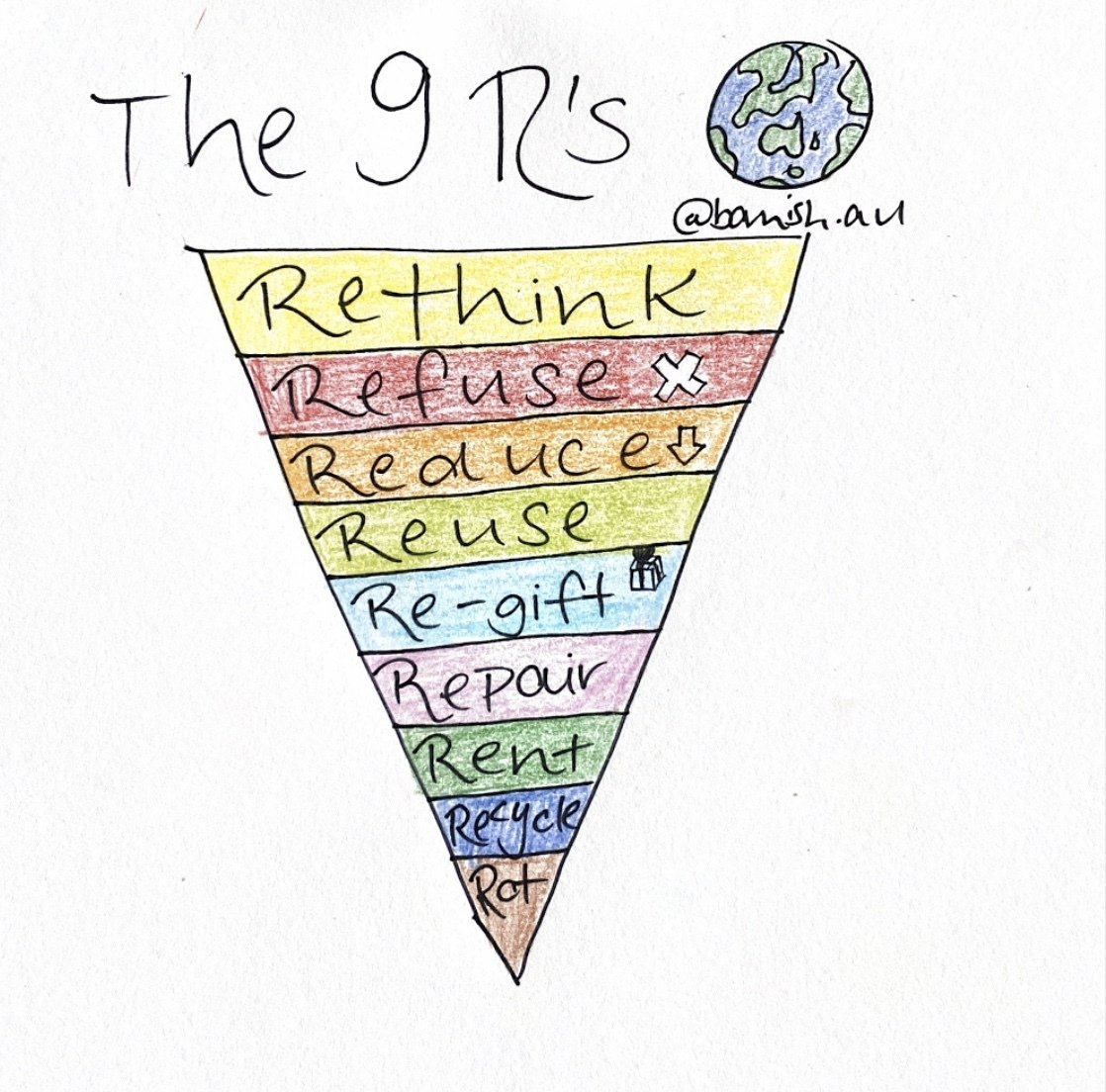How to live eco-friendly?
Everyone can contribute to environmental and climate protection. The five main things to consider are the following:
Rethink
Do you really need it?
Refuse
If we stop buying new, unnecessary items every day, we reduce the amount of waste produced enormously. But being so strict is not always possible, and there are ways of shopping eco-friendly.
First, buy local and buy things, particularly fruit and veggies, that are in season and that did not have to be transported from far away.
Refuse unnecessary plastic packaging. Whenever you are asked if you want a plastic bag, your answer should be a NO. Instead, use your cotton bag. If you don't have one, look for a paper box lying around in the shop and reuse it. By refusing more, we cause fewer emissions, less waste. In the first place, rubbish that is avoided is by far the most environmentally friendly impact we can have.
Reduce
Reduce means to buy less. For example, instead of buying five new pair of shoes every year, you could try buying half as many, or even less. This brings several advantages. If you buy less, you can afford better quality shoes made out of eco-friendly materials.
But, of course, reducing our consumption and thinking more green doesn't just apply to clothes. Reducing everything that causes emissions and waste, like packaging of all kind, car and air miles, milk and meat consumption, etc., creates a positive impact on the environment.
Reuse
Following an eco-friendly lifestyle includes reusing items. An excellent example of this are plastic bags, which we don't have to banish from our household necessarily wholly if we already have them. Instead, it is ecologically beneficial to use them repeatedly until they are no longer usable and we can dispose of them in the recycling bin.
A better option than plastic bags are cotton bags that are eco and can look super fun. Another example is reusable coffee cups instead of getting disposable coffee-to-go cups over and over again.
Re-gift
Before you throw things away, think of gifting it to someone who could still make use of the item.
Repair
Can you fix it and use it again?
Recycle
Feeding into the material cycle is excellent. However, the most important steps into an eco-friendly life are the previous three steps: refuse, reduce, reuse.
Unfortunately, even though recycling reduces emissions, sorting, cleaning, and further processing is energy-intensive. Also, only a little more than half of the recyclable rubbish collected is actually recycled. The rest is simply incinerated. So yes, we need to recycle, but we need to refuse, reduce, and reuse even more.
Rot
Whenever possible, try to use compost for organic waste. Avoid mixing food waste with other household waste. If you have a garden and space, use your own compost and create fertile soil to grow the healthiest and most environmentally friendly organic fruit and vegetable.


